According to the Center for Disease Control (CDC) children as young as eight years old spend, on average, six hours per day on a screen.
Combined with over scheduling, content overload, and the rising mental health epidemic, kids today are more stressed than previous generations. In a world with rampant overconsumption and high levels of mental health challenges, meditation offers welcome relief that today’s youth so desperately needs.
Meditation offers so many research-based benefits for kids: better sleep, improved focus, less anxiety, and more emotional regulation. Meditation is also a potential protection factor, acting as one part of a healthy support system for kids against stress.
With so much content begging for every second of our attention, it can be hard to know how exactly to introduce meditation to kids. In this article we will focus on many of the most common types of meditation and share how each one can benefit kids.
And while every child can meditate, every child will not enjoy all types of meditation. Meditation is like a box of crayons: there are many beautiful colors, but you’ll always have a few favorites. The fun job, for grown-ups, is introducing them to your little ones to see which ones work best for them. And you will likely find that certain meditation styles work better at different times, and for the different moods your child has throughout the day.
For example, a child struggling with emotional regulation may not want to do mantra meditation in moments of extreme frustration. They may, however, find that a moving meditation is a perfect way to handle times of dysregulation. A mantra meditation may be perfect at bedtime, and help them fall asleep feeling relaxed and free from worries.
In a focused meditation, a child uses any of their five senses to focus on an object of choice. This might look like:
The idea in focused meditation is simply to focus on the object and keep attention…focused. When a child’s attention wanders, and it will, remind them to bring their thoughts back to the object. This type of meditation can be good for calming a child who is anxious and helping kids to increase their attention spans.
These types of meditations are very relaxing for children as they are led on a meditative journey by an audio track (or captioned or signed track for children with hearing loss.) These types of meditation usually involve a lot of creative visualization and soothing imagery.
Guided story meditations are perfect for bedtime, transition times and anytime a child needs to slow down and relax.
Try listening to The Night Bridge, a story meditation about transitioning from day to night.
This type of meditation is a wonderful way to help little ones relax and release stress at bedtime. The practice may involve tensing, and then relaxing, one muscle group at a time, slowly working the way through the body and maybe saying “good night” to each part of the body, from head to toes.
It might also involve imagining a sparkling light, a wave of color, or a ball of energy moving through your body, and as it passes through each muscle group, your mind and body relax.
Loving-kindness meditations, or metta meditations, are often used to nurture feelings of love, kindness and empathy for others, and oneself.
It usually involves repeating a mantra of sending good wishes to yourself, a loved one, a friend, or someone the child doesn’t know very well, and then going out to all beings on the planet, including animals, plants, trees, lakes and oceans, and the gentle earth that cares for all.
This practice is very calming and can be used as part of a bedtime routine or as a gentle way to begin the day. Loving-kindness meditation has been shown to reduce self-criticism, ease symptoms of depression, and increase positivity.
Mantra meditation involves repeating a word, phrase, or sound, over and over again, either out loud, silently, or in chant or song. Research suggests that mantra meditation may be particularly helpful for children with autism.
Using affirmations or calming words as part of a mantra meditation practice is also beneficial for little ones, and can be done any time of the day: waking up, throughout the day, or at bedtime. Mantra meditation always boosts feelings of calm and confidence.
Quite similar to guided story meditations, visualization meditation can be done independently or by listening to an audio, that invites kids to use their senses and imagination to feel calm, peaceful and even free from feelings of pain or sickness.
Visualization is used by many sports figures and entertainers as a way to “visualize and then actualize” winning a game or succeeding at a professional endeavor.
For kids, the practice can help with confidence toward a goal, like learning a new skill, reducing anxiety or worry by visualizing themselves as peaceful and calm, or reducing pain or illness, perhaps by visualizing a color, or soothing warmth, comforting what doesn’t feel well in the body.
For adults a moving meditation is often a practice like yoga, walking, or tai chi. For kids, a moving meditation might be walking, jumping on a trampoline, or swinging on a swing.
Movement meditation helps kids, because they may not always be able to meditate while sitting still. A movement meditation may look like a walk where they focus on counting as many steps as they can, noticing the sky and the nature around them, or perhaps the sounds and the smells they encounter. Moving meditations look different for every child, and may incorporate other types of meditations, the difference being that the child does them while moving.
The good news is there are lots of kinds of meditations and many ways to help your child disconnect from the noise and busyness of life and connect to the calm within themselves.
Wee Meditate offers many styles and lengths of meditations, perfect for kids no matter what type of meditation they like best.
To gain full access to our meditation library, sign up or login to start listening!

